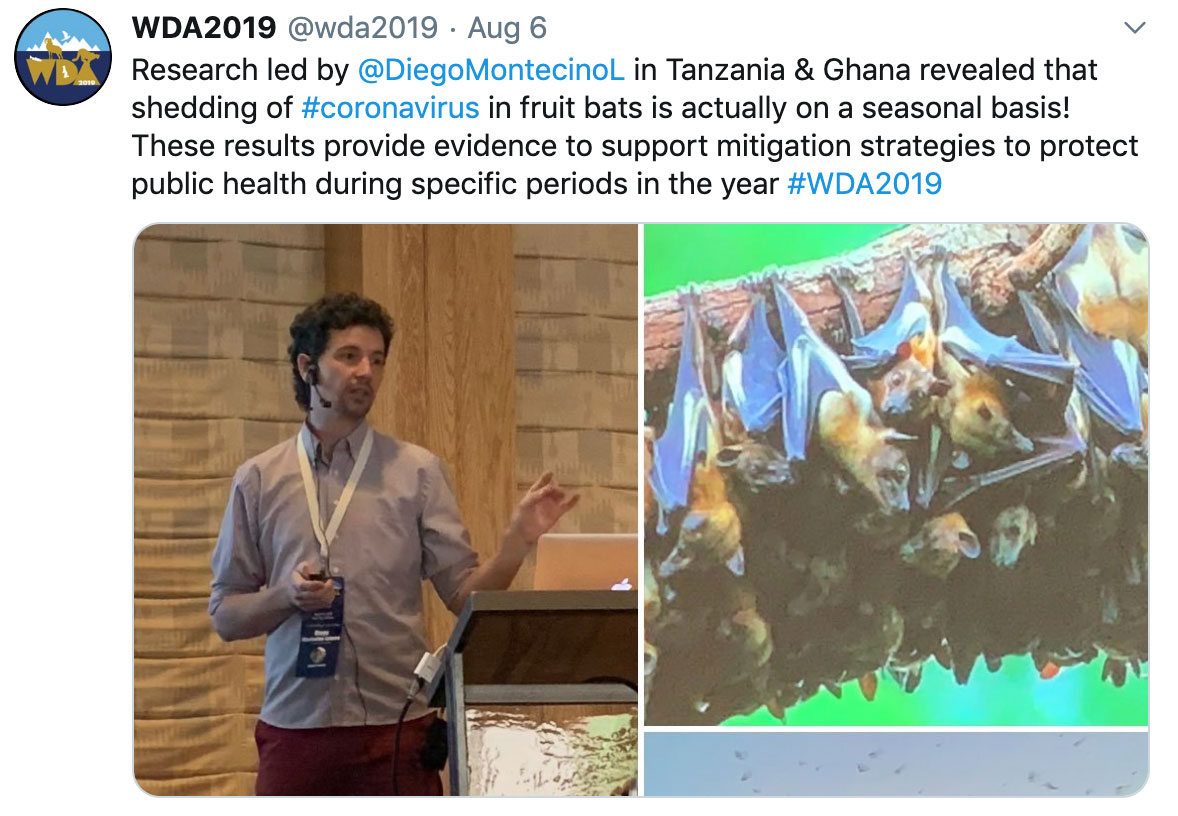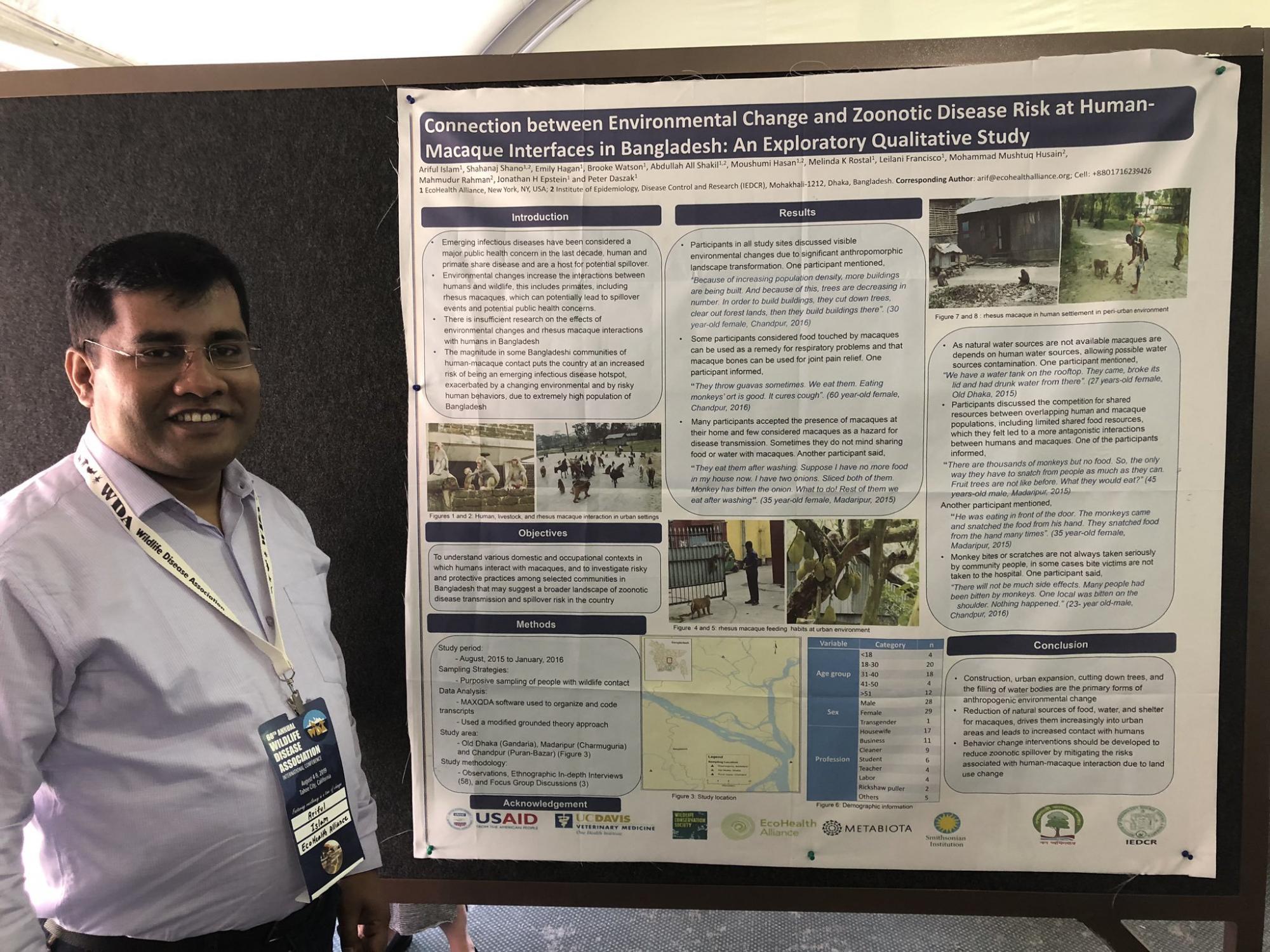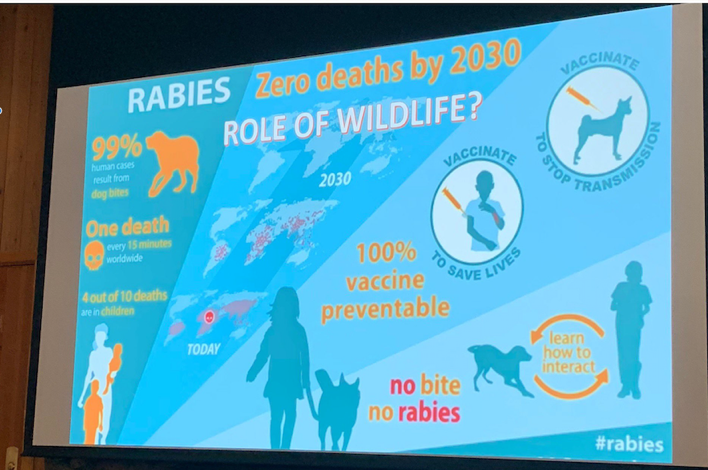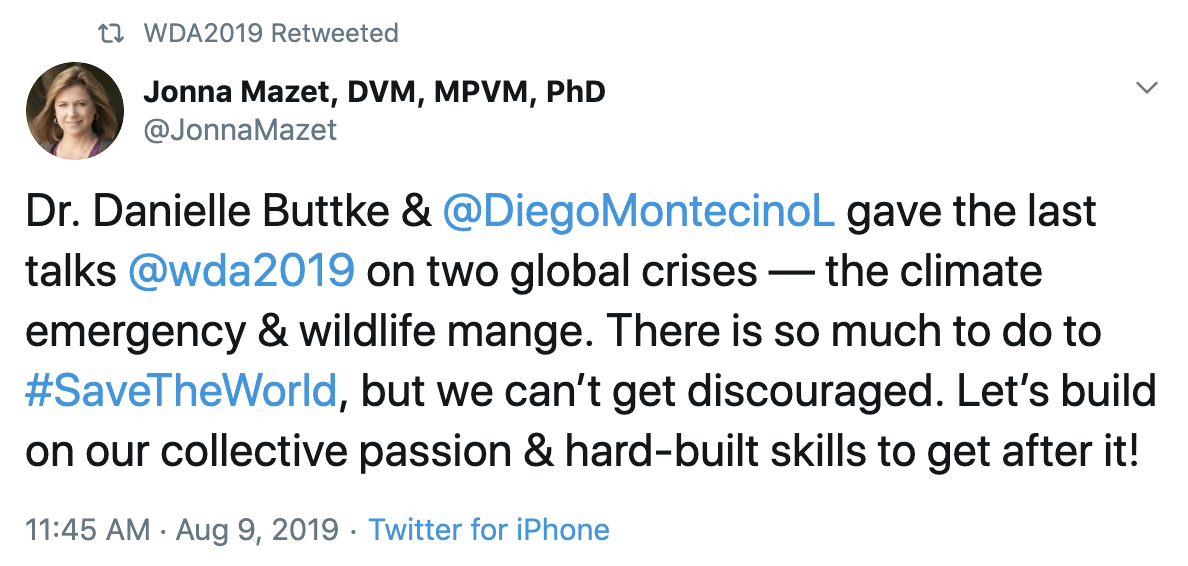5 Takeaways from the Wildlife Disease Association Conference
Earlier this month, a large cohort representing the UC Davis One Health Institute participated in the 68th International Wildlife Disease Association (WDA) Conference in Tahoe City, California. As a graduate student with the Karen C. Drayer Wildlife Health Center (WHC) in the UC Davis School of Veterinary Medicine, I was honored to be part of this group, as a conference attendee and student poster presenter.

Here are five takeaways that were meaningful to me as I returned home from WDA with a renewed sense that science is a collaborative process, one that takes a community to protect wildlife, people and the environment we all share.
1. One Health concepts are everywhere, and challenges abound.
Finding One Health solutions to wildlife conservation challenges is a time-tested concept, and many WDA presentations touched on some aspect of the approach. Challenges were addressed as well: the need to increase diversity in the field of One Health by advocating that all voices have a place at the table; support inclusion of environmental health, an often-neglected aspect of the One Health triad; and, as veterinarians involved in disease spillover investigations, promote public health and wildlife conservation, emphasizing the importance of interconnected ecological roles and services.

2. Human dimensions must be incorporated into wildlife and ecosystem conservation.
Socio-economic issues are integral aspects of tackling wildlife and environmental issues around the world. Respect for diverse cultures and the values of people directly impacted by conservation decisions are vital for successful conservation programs. We need both scientific rigor and community support to enact real change. This often involves listening and talking to people in communities to learn about their concerns and ideas. This can take many forms including citizen science initiatives, capacity-building, honoring animal-human relationships, and incorporating social and environmental justice in our science.

3. Science communication skills are vital.
The presentations with the greatest impact were those that told a story. Creating a narrative to weave together aspects of your research and make the findings relatable is a powerful tool. Effective communication with diverse audiences is an increasingly valuable skill set, and for good reason. Science communication training, improv for scientists, and other messaging workshops help scientists harness their scientific expertise to actionable change.

4. Support for the next generation of wildlife scientists and professionals ensures a future for wildlife health and conservation.
WDA comprises a unique group of wildlife researchers, managers and veterinarians who actively promotes student involvement—undergraduate, graduate and veterinary—on many levels, including presentation and poster opportunities, scholarships and grants. An entire day of WDA is dedicated exclusively to student presentations. There is also support for early career professionals.
Ten years ago, I attended my first WDA conference as a first-year veterinary student and I still remember the warm welcome and support I felt from the community. Now as a Ph.D. student, that same support remains, and it continues to mean a great deal to me.
This year I presented a student research poster about the link between domoic acid toxicity and cardiac disease in southern sea otters. I was thrilled to receive an award for best student poster presentation.

Cardiomyopathy is a chronic heart condition and an important cause of mortality in free-ranging sea otters. Our study uses data from intensively monitored sea otters to unravel the complex associations between cardiomyopathy and exposure to domoic acid, a toxin produced by marine harmful algal blooms. Our findings will help assess the impact of changing environmental conditions on sea otter health and conservation efforts. This research is supported by the Morris Animal Foundation Fellowship Training Grant.
By fostering new ideas and showing genuine interest in students, WDA ensures that wildlife health and conservation will continue to grow into the future.
5. If you don’t look for it, you won’t find it.
There are still so many questions left unanswered, or even unasked. New discoveries happen all the time. New ideas and perspectives are the engine of scientific progress. The WDA conference is a good reminder that dialogue, constructive feedback and sharing our work is how change is made.

Learn more about the science and community behind this year’s WDA conference on Twitter. The 2020 conference will be held in Cuenca, Spain.
 Megan Moriarty is a veterinarian and Ph.D. candidate in epidemiology at the UC Davis School of Veterinary Medicine. A graduate student researcher at the One Health Institute’s EpiCenter for Disease Dynamics, Megan pursues research related to southern sea otter health, heart disease and marine harmful algal blooms. She has also studied the Santa Catalina Island fox, assessing the impact of ear mite treatment on ear tumor development. Megan’s goal is to integrate disease investigation with population biology and environmental drivers to inform species conservation.
Megan Moriarty is a veterinarian and Ph.D. candidate in epidemiology at the UC Davis School of Veterinary Medicine. A graduate student researcher at the One Health Institute’s EpiCenter for Disease Dynamics, Megan pursues research related to southern sea otter health, heart disease and marine harmful algal blooms. She has also studied the Santa Catalina Island fox, assessing the impact of ear mite treatment on ear tumor development. Megan’s goal is to integrate disease investigation with population biology and environmental drivers to inform species conservation.